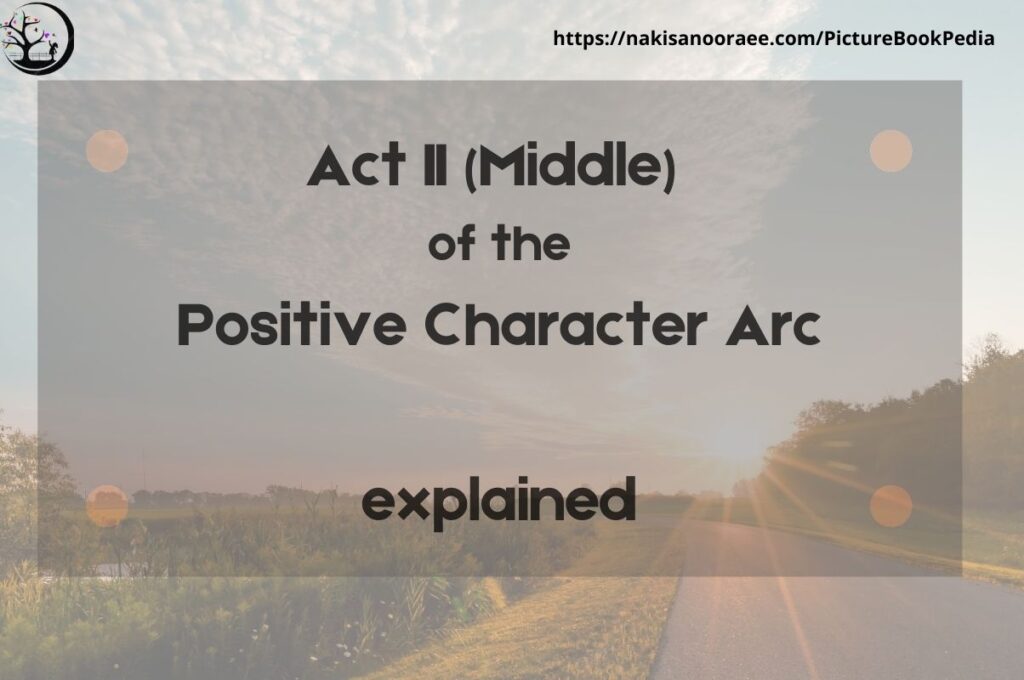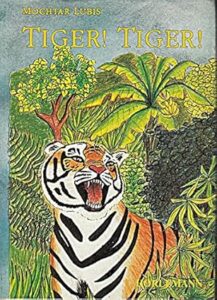What is Middle or Act II?
Do you happen to watch a movie or read a book whose Protagonist changes overnight? And you found it unrealistic. If I tell you a story of (a) a poor orphan who became (b) a rich man, would you believe this story? Or, do I need to lay some step stones between the (a) and the (b) so close to real life that you believe the character’s change? I should SHOW you the transition. a Gradual transition!
Story is all about transformation. Either the Protagonist changes (positive-arc or negative-arc) or the Protagonist changes the world around him (flat-arc Character). In both cases, the story shows the reader a transition, from the initial state to the final one.
In the Narrative Structure, showing this transition is the pivotal task of Act II or Middle. The rule of thumb says for a 100-page manuscript, 50 pages should be devoted to the Middle. Beginning and End, each takes about 25 pages. Of course, this is merely an approximation and guideline, not an unbreakable rule.
In Beginning (or Act I), the Protagonist faces an Inciting Event that disturbs his world. Reacting to the Inciting Event, the Protagonist changes the gears toward a new goal (aka Story Goal). If he gets easily there, the story would be super boring. We need obstacles not only to prevent him from easily reaching the End but also to show the gradual change—either in the Protagonist or in the world around him, depending on the Character Arc’s type.
Should we just randomly bombard the Protagonist with problems and obstacles to fill the Middle and burn the Protagonist with whatever comes up? Or, do we need to think of an order in arranging obstacles? If so, which criteria set the order?
Before we proceed to the important Plot Points in the Middle, it is worth reminding that after this stage, the type of character Arc determines the story path. If you want to write a negative Character Arc (in which at the end of the story, the Protagonist is in a worse place than where he was initially), you should set gears towards decay. If you want to create a positive Character Arc, you need to emphasize the character’s intention towards growth. The same is valid about flat-arc character. The reader should see determination. The character should stand tall, no matter what happens.
Therefore, a discussion about Plot Points of Middle would be more meaningful when we go look at different Character Arcs. In this post, we will look at the positive Character Arc.
Middle & Positive Character Arc
The path to the Plot Goal should get harder gradually, like in real life. Even when we are in trouble, we don’t grasp the meaning of the trouble or the disaster at once. We step-by-step understand what has happened. If the story punches all at once in the Protagonist’s face, the reader steps back. We start by giving a taste of hardship first. An Event(s), enough hard, to convince the reader that getting to the Story Goal won’t be easy. Not at all! In storytelling, we call it Pinch Point I.
From some authors’ point of view, Pinch Point I belongs to the Beginning. While many others believe it should be in the Middle. No matter which option you select, the main thing is to show the Protagonist a hint of the looming opposition in the distance. Don’t forget that it is supposed to be a pinch, not a punch.
Remember that events and obstacles in the Middle are aimed to make a better person of the Protagonist (because we are discussing the positive Character Arc). From the basic positive Character Arc, we know two substances are needed: (1) a misbelief (or a lie) and (2) a Truth to be learned. Bearing this in mind, let’s go back to Pinch Point I. In this stage, the Protagonist faces a consequence or a hint that what he believes might be incorrect. For example, for a person who believes in materialism, a pinch point could be an event when a person helps him with no expectation! Or, he can be trapped in a place where his money cannot solve the problem.
I find it helpful to study the resemblance between the story and real life. In life, there are moments we get a hint that something is not working. It could be a trivial thing. For example, someone’s diet is unhealthy and she needs to cook more often at home. Or, something big, like a broken marriage. These hints are Pinch Point I.
Now, the Protagonist needs to make a determining decision and to change the gear toward improvement. A decision with no return. Because the Protagonist has realized that one of his beliefs (or a lie he used to tell himself) should change. This is called Midpoint. The midpoint happens about halfway through the story. That is why it is called so. Midpoint is where the Protagonist should make up their mind.
Notice that change should be gradual and Midpoint marks the first signs of change. Each change is an accumulation of small movements. Think of the first movement. That is the Midpoint of the story.
The theory of three-act structure says at this point story should give the Protagonist an experience of liberation because of adopting the change, an indication that he has picked up the correct road. This is called Pinch Point II. Having said that, not necessarily each story should have all Plot Points. These are guidelines to make a smooth change, not rules to apply mechanically to your manuscripts.
If the change goes on smoothly and the Protagonist learns the Truth he has got to learn, there would be no need for the End! The story should be finished here! Well, it isn’t and the best part of the story (the climax) awaits the reader around the corner. We need a strong force to propel the Protagonist towards the End. This is the task of Plot Point II. This marks the end of the Middle and beginning of End (or Act III).
At Plot Point II, either the Protagonist has everything yet he knows something is missing. Thus, takes an action to find the missing element or he has lost everything—Some call this the lowest point of the story.
In a nutshell, major Plot Points of Middle for the positive Character Arc are:
- Pinch Point I misbelief or lie is not working anymore
- Midpoint change, a new decision
- Pinch Point II Truth is liberating
- Plot Point II Protagonist lost everything or he has everything but something is missing!
I should mention that some authors think these Plot Points are very detailed and two Plot Points suffice—Midpoint and Plot Point II. I think whether I want to use these points or not, learning these is essential to hone my writing craft.
In my mind, I have an image of a positive Arc Character: it resembles an airplane’s takeoff. The pilot starts the engine (Inciting Event) and turns into the runway (Plot Point I, end of Beginning). Next, he accelerates (Middle starts). Inside the cabin shakes, the outside gets blurry. It is neither standing nor flying, a transition it is. A dangerous situation: if the airplane fails to take off, for any reason, a crash would be inevitable. But, the pilot accelerates more. The airplane picks up speed, more and more. And in the shakiest moment, takeoff. End of the transition, end of Middle.

The airplane flies toward the blue calm sky, towards the climax!
The next blog post will be the End (Act III) of the positive Character Arc. In two separate blog posts, I will look at the Middle and the End of the Flat-arc character. Meanwhile, please read my previous blog posts at PictureBookPedia page.
I publish a newsletter at the beginning of each quarter, including links to my recent blog posts. If you haven’t subscribed so far and you’d like to receive it, please enter your email address below. The form you have selected does not exist.




